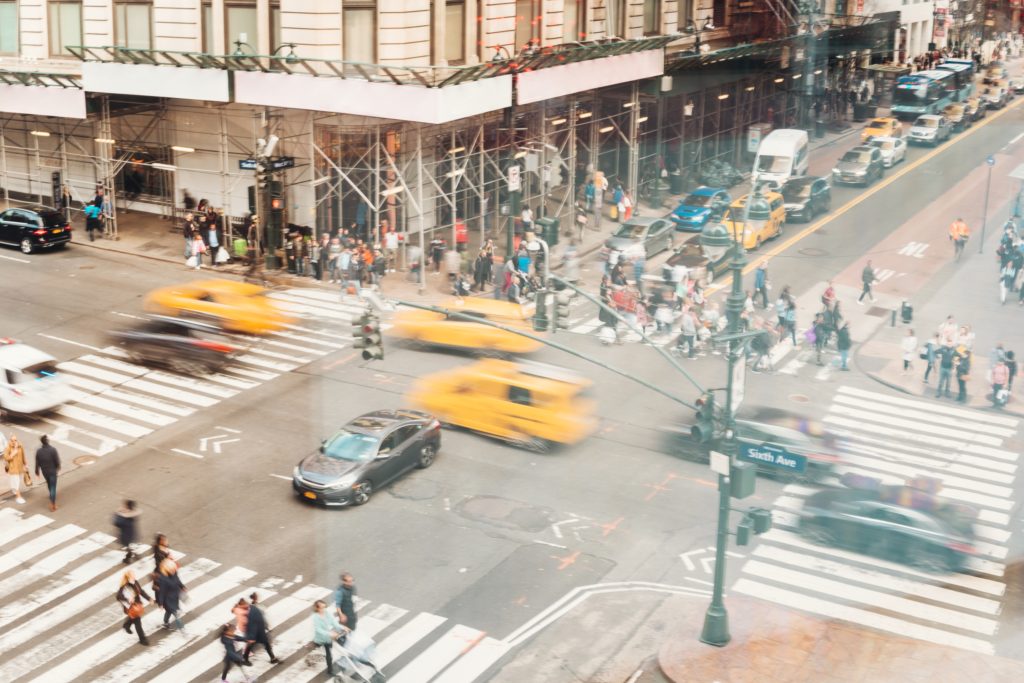Gonzalo Moscoso del Prado Gredilla. UPM Student.
Recently, academics from renowned universities such as the University of Tokyo and the Massachusetts Institute of Technology (MIT), among others, have carried out a revealing study that sheds light on an issue that deeply affects our cities: the pedestrianisation of urban roads. This study, based on an exhaustive review of thousands of credit card transactions provided by BBVA bank in 14 major Spanish cities, has conclusively demonstrated thatthe proper pedestrianisation of urban areas not only benefits mobility and air quality, but also has a direct andpositive impact on local businesses.
Pedestrianisation, which involves restricting vehicle access to certain urban areas and promoting a more pedestrian-friendly environment, has been the subject of debate in many cities around the world. However, thisstudy suggests that the economic benefits resulting from these measures are undeniable. Cities that haveeffectively carried out pedestrianisation have experienced a significant increase in sales for local businesses inthe area.
The study was based on bank data from credit card transactions in Spanish cities, allowing researchers toanalyse consumer behaviour before and after the implementation of pedestrianisation measures. The resultsrevealed a consistent increase in sales volume in pedestrianised areas, regardless of their geographical location within the city. This finding highlights that pedestrianisation not only benefits city centres, but can also be effective in peripheral areas.
Lessons from Madrid: The Gran Vía Experience
Madrileños will remember the controversy surrounding the widening of pavements on Madrid’s iconic Calle Gran Vía carried out in 2018. Despite initial opposition and concerns expressed by shopkeepers about lost sales, thefinal results have been surprisingly positive. After the completion of the works, real estate in the area was revalued and shops experienced a gradual increase in sales. This experience in Madrid supports the findings of the study and shows that the positive effects of the actions can be more evident in the long term.
Benefits Beyond Sales
While the positive impact on sales is a crucial factor, pedestrianisation measures offer benefits that go far beyondthe local economy. The transformation of streets and squares into pedestrianised spaces has a direct impact onthe quality of life of citizens. Streets are filled with activity, vehicle noise is reduced, and an environment conduciveto socialisation and enjoyment of urban life is created.
The Environmental Commitment
In addition to the economic and social benefits, pedestrianisation measures are also crucial to meeting Spain’s climate commitments to the European Commission and the Paris Climate Pact. Reducing air pollution is a priority in the fight against climate change, and reducing vehicular traffic contributes significantly to this effort. Pedestrianisation encourages the use of public transport, cycling and walking, thus reducing greenhouse gasemissions.

Preference for Pedestrian Spaces
Empirical evidence shows that people prefer pedestrian-friendly urban environments to those oriented towards private vehicles. Shops located in pedestrianised areas tend to attract more visitors and, as a result, experience higher sales volumes. This fact highlights the importance of rethinking urban planning and considering pedestrianisation measures as an investment in the sustainable and prosperous future of our cities.

Conclusions
In summary, the study by academics from the University of Tokyo, MIT and other universities, backed by the experience of Madrid’s Gran Via, underlines the importance of pedestrianisation of urban roads as an effective strategy to boost local commerce and improve the quality of life in our cities. Moreover, these measures are essential to meet environmental and climate objectives. Local and national governments should seriously considerimplementing policies that encourage pedestrianisation of urban areas, and citizens should support these initiativesfor the benefit of all. The future of our cities and the planet depends on it.
Sources
Street pedestrianization in urban districts: Economic impacts in Spanish cities. Research Center forAdvanced Science and Technology, the University of Tokyo. Department of Urban Studies and Planning, Center for Real Estate and Sustainable Urbanization Lab, Massachusetts Institute of Technology. SENSEable CityLaboratory, Massachusetts Institute of Technology. Istituto di Informatica e Telematica, CNR. BBVA (DataStrategy Area) (2021). Retrieved from: https://doi.org/10.1016/j.cities.2021.103468
La espectacular revalorización de la Gran Vía: los alquileres comerciales se disparan un 25%. Rocio Regidor, The Objective (2022). Retrieved from: https://theobjective.com/economia/2022-06- 06/revalorizacion-gran-via/